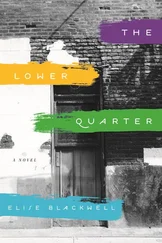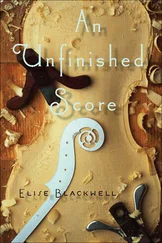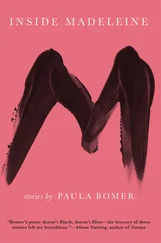Gabriel Blackwell - Madeleine E.
Здесь есть возможность читать онлайн «Gabriel Blackwell - Madeleine E.» весь текст электронной книги совершенно бесплатно (целиком полную версию без сокращений). В некоторых случаях можно слушать аудио, скачать через торрент в формате fb2 и присутствует краткое содержание. Год выпуска: 2016, Издательство: Outpost19, Жанр: Современная проза, на английском языке. Описание произведения, (предисловие) а так же отзывы посетителей доступны на портале библиотеки ЛибКат.
- Название:Madeleine E.
- Автор:
- Издательство:Outpost19
- Жанр:
- Год:2016
- ISBN:нет данных
- Рейтинг книги:4 / 5. Голосов: 1
-
Избранное:Добавить в избранное
- Отзывы:
-
Ваша оценка:
- 80
- 1
- 2
- 3
- 4
- 5
Madeleine E.: краткое содержание, описание и аннотация
Предлагаем к чтению аннотацию, описание, краткое содержание или предисловие (зависит от того, что написал сам автор книги «Madeleine E.»). Если вы не нашли необходимую информацию о книге — напишите в комментариях, мы постараемся отыскать её.
Madeleine E. — читать онлайн бесплатно полную книгу (весь текст) целиком
Ниже представлен текст книги, разбитый по страницам. Система сохранения места последней прочитанной страницы, позволяет с удобством читать онлайн бесплатно книгу «Madeleine E.», без необходимости каждый раз заново искать на чём Вы остановились. Поставьте закладку, и сможете в любой момент перейти на страницу, на которой закончили чтение.
Интервал:
Закладка:
Another day I saw her in the corner of the frame of a video on the Oregonian ’s website, a video of a protest taking place downtown, near Pioneer Square. I watched the video again, and then I watched it again. I was sure it was her. Standing next to her was a man whose face was obscured by another person standing in front of him. This man was clearly holding onto her arm. She was supposed to be in class at the time of the protest. I didn’t know what to think. If I asked her about it, she would get defensive, whether or not anything had happened. I decided I would let her bring it up.
She came home late that night, having gone to a bar with a friend and then stayed later than she expected in order to sober up a little. That’s what she told me, anyway. I was already half asleep when she lay down beside me but I could tell she had just taken a shower. Not knowing what I was saying, I asked her why she had taken a shower, but, in my half-awake state, I must not have spoken clearly. She didn’t understand me, or she claimed not to understand me, and said so, turning to face away from me. Now I was fully awake. I repeated my question. She told me she had been around smokers at the bar and didn’t want the pillow to smell like cigarettes. She fell asleep then, but despite the fact that I had been on the verge of drifting off just moments before, I laid awake for what seemed like hours and woke up to find I had fallen asleep after all. I knew I would do no work that day. I thought about following her instead.
…
[Laura] Mulvey considers two options open to the male for warding off castration anxiety: in the course of the film the man gains control over the woman both by subjecting her to the power of the look and by investigating and demystifying her in the narrative.
(Modleski, Women )
…
Men’s fascination with [the] eternal feminine is nothing but fascination with their own double, and the feeling of uncanniness, Unheimlichkeit , that men experience is the same as what one feels in the face of any double, any ghost, in the face of the abrupt reappearance of what one thought had been overcome or lost forever.
(Sarah Kofman, The Enigma of Woman )
…
Latent structure is master of obvious structure.
(Heraclitus, Fragments )
…
[Scottie’s desire] is a desire to merge with a woman who in some sense doesn’t exist — a desire, then, that points to self-annihilation.
(Modleski, Women )
…
Writing about Ben Hecht’s Notorious script, Bill Krohn says, “Hecht believed that what men love in women is their own ‘lost femaleness,’ and he portrayed in Dev’s behavior the same mechanism of disavowal that he analyzed in his 1944 study of anti-Semitism, A Guide for the Bedeviled . Dev fights the allure of Alicia’s femaleness like the anti-Semite who, in Hecht’s words, ‘wrestles with the jew as an ape might assault his own unlovely image in the mirror,’ and Alicia pays the price.”
(Bill Krohn, Hitchcock at Work )
…
Kim Novak’s career was modeled on that of Jayne Mansfield’s, a career created out of thin air by Harry Cohn. In other words, Novak’s was a career modeled after a career invented by a man who set out to make a woman into a woman other men will find appealing.
…
When Scottie Ferguson in Vertigo begins investigating the mysterious Madeleine Elster, the first point of view shot shows him as a mirror image of the woman, and the rest of the film traces the vicissitudes of Scottie’s attempts to reassert a masculinity lost when he failed in his performance of the law.
(Modleski, Women )
…
In Sophie Fiennes’s film, The Pervert’s Guide to Cinema , the philosopher Slavoj Zizek explains Scottie’s motivations in the second half of the film with a maxim I have never before heard: “The only good woman is a dead one.” It is, frankly, difficult to listen to, even given Zizek’s context: explaining what he calls the “male libinal economy.” I am not much swayed by his jargon, here or elsewhere in the film, and his insistence on likening film to shit (he explains the moments before a film begins are like looking into a toilet bowl and waiting for what has been flushed down to come back up) is risible and more than a little ridiculous, but many of his insights into Vertigo and the other films he discusses are interesting.
Putting aside the rather ugly implications of (even the existence of) such a maxim, and keeping in mind Modleski’s contentions, Zizek’s comment puts me in mind of one of the earliest examples of the double in American literature, Edgar Allan Poe’s “William Wilson,” in which the titular Wilson is haunted by a man exactly like him who turns up whenever Wilson attempts to cheat, deceive, or otherwise act immorally. At the end of the story, Wilson confronts his double and stabs him repeatedly, but then thinks he perceives a mirror in front of him where he thought the other Wilson had stood. In it, his reflection is bloodied and pale as though dying.
Madeleine is a woman who doesn’t exist, a phantasm. When Scottie asks who he thinks his wife is impersonating, Elster answers, “someone dead.” Elster is not only referring to Carlotta Valdes — he is also referring to Judy’s acting out of Madeleine, his wife who he has already murdered, i.e., “someone dead.” Judy as Madeleine as Carlotta is a woman playing a ghost acting out a ghost. Anything of substance in what Scottie sees in such an apparition is thus bound to be a reflection; the woman in front of him is trying her best to appear immaterial. When we look through glass at the silver backing of a mirror, what we see is neither glass nor silver. We see ourselves. Scottie looks through Madeleine at Judy and sees neither Madeleine nor Judy. He sees his double, and, because all doubles and doppelgangers exist ultimately to reveal to us our failings, he destroys it for what it reveals in him. That, in doing so, he leaves nothing intact is the tragedy of Vertigo . He cannot recognize in Judy what is Judy’s because he is so determinedly looking for what is Scottie’s.
…
Robin Wood writes, “Throughout the first part [of Vertigo ], Hitchcock uses the technical apparatus of point-of-view shooting/editing systematically to enforce identification with the male viewpoint. The very first sequence after the credits employs this more emphatically than any other Hitchcock opening: thereafter, we see through Scottie’s eyes and we are prevented from seeing virtually everything that is beyond his consciousness.” (Wood, HFR, 363) And yet, take another look at one of the more famous “subjective” sequences in the film — the scene at Ernie’s where Scottie first sees “Madeleine.”
When Kim Novak enters the bar area, we get a close-up from what we believe must be Scottie’s point of view. Indeed, Scottie’s subsequent fascination with “Madeleine” seems to hinge on our belief in just that — that this is the moment in which Scottie is bewitched. In a shot that is in the trailer but was cut from the final film early in the editing process, Novak looks directly into the camera, a technical no-no (breaking the fourth wall) but a very clear signal to the audience as to how to read this set-up. But then we cut away back to Scottie, in a medium shot that reveals he is looking at “Madeleine” only out of the corner of his eyes, using the very limits of his peripheral vision. The POV shot, then, could not possibly reflect what Scottie sees in those moments—”Madeleine” occupies the center of its frame. She is not occluded at all, as she would be if she were occupying a peripheral space. Instead, the shot must represent the view of someone sitting next to Scottie, turned fully towards Novak in that instant. But there is no such person at the bar. We look, with the camera, and there is only a couple turned away from the room, towards the bar, engrossed in a private conversation we cannot hear. In all subsequent so-called “subjective” shots, we will find that the camera occupies a space other camera angles reveal is absent of observers, too. It is thus a ghost who looks over Scottie’s shoulder, seeing the things that he ought to have seen — seeing things as he might see them with reflection but not as he sees them in the moment. We, the audience, see only what is “beyond his consciousness.” It is precisely the fact that he is blind to this part of himself, this self beside his self, that leads him to the Mission, to the Tower, to the inquest, and back through them all.
Читать дальшеИнтервал:
Закладка:
Похожие книги на «Madeleine E.»
Представляем Вашему вниманию похожие книги на «Madeleine E.» списком для выбора. Мы отобрали схожую по названию и смыслу литературу в надежде предоставить читателям больше вариантов отыскать новые, интересные, ещё непрочитанные произведения.
Обсуждение, отзывы о книге «Madeleine E.» и просто собственные мнения читателей. Оставьте ваши комментарии, напишите, что Вы думаете о произведении, его смысле или главных героях. Укажите что конкретно понравилось, а что нет, и почему Вы так считаете.












